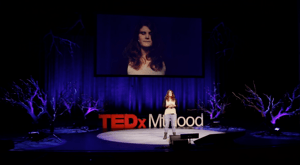We all use plastic every day. It is a cheap, resistant and adaptable material that is found everywhere: in commonly-used objects, in packaging, in means of transport, in clothes. However, we have known for some time that all this convenience comes at a high price for the environment. Recycling and reusing plastic has always been fundamental, but this only covers a tiny part of the plastic we produce. We therefore need new solutions. And, as explained in this TED Conference, by the researcher Morgan Vague, we are getting unexpected help from bacteria.
Bacteria are microscopic living organisms, invisible to the naked eye, found everywhere in a wide range of different and extreme environments. It is for this exact reason that they have to constantly solve the problem of how to feed themselves. And this is what gave Vague the idea of trying to see whether the bacteria in plastic-polluted environments have figured out how to use plastic for food.
I created a carbon-free environment. An environment without the usual carbons, or food, that bacteria, like us humans, need to live. Now, in this environment, I provided my bacteria with a sole carbon, or food, source. I fed my bacteria polyethylene terephthalate, or PET plastic. PET plastic is the most widely produced plastic in the world. It’s used in all sorts of food and drink containers, with the most notorious example being plastic water bottles, of which we humans currently go through at a rate of one million per minute. So, what I did, was essentially put my bacteria on a forced diet of PET plastic and see which, if any, might survive or, hopefully, thrive.
The result was surprising: the researcher managed to select bacteria that learnt how to eat PET using a special enzyme, called lipase, which binds to this type of (very hard and resistant) plastic, helping to break it into small chunks of sugar, which the bacteria can then use as an energy source.
An ingenious and brilliant solution that may however make some people, understandably, a little nervous: could the cure be worse than the evil? Vague is convinced that it isn’t, and she explains the reason why:
These bacteria are already in the environment. The bacteria in my research are not genetically modified. These are naturally-occurring bacteria that have simply adapted to their plastic-polluted environment and evolved the incredibly gnarly ability to eat PET plastic. So the process of bacteria eating plastic is actually a natural one. But it’s an incredibly slow process. And there remains a lot of work to be done to figure out how to speed up this process to a useful pace.
Currently, Vague, together with a group set up by the microbiologist Jay Mellies at Reed College, Portland (USA), is studying how to treat PET plastic with ultraviolet rays, so that the light from the sun can soften and transform the large and resistant bonds of PET plastic into an easier form for the bacteria to digest.
The ultimate goal of the research is to create a contained carbon-free system on an industrial scale, similar to a composter, where the bacteria can thrive by feeding on PET plastic waste alone.

